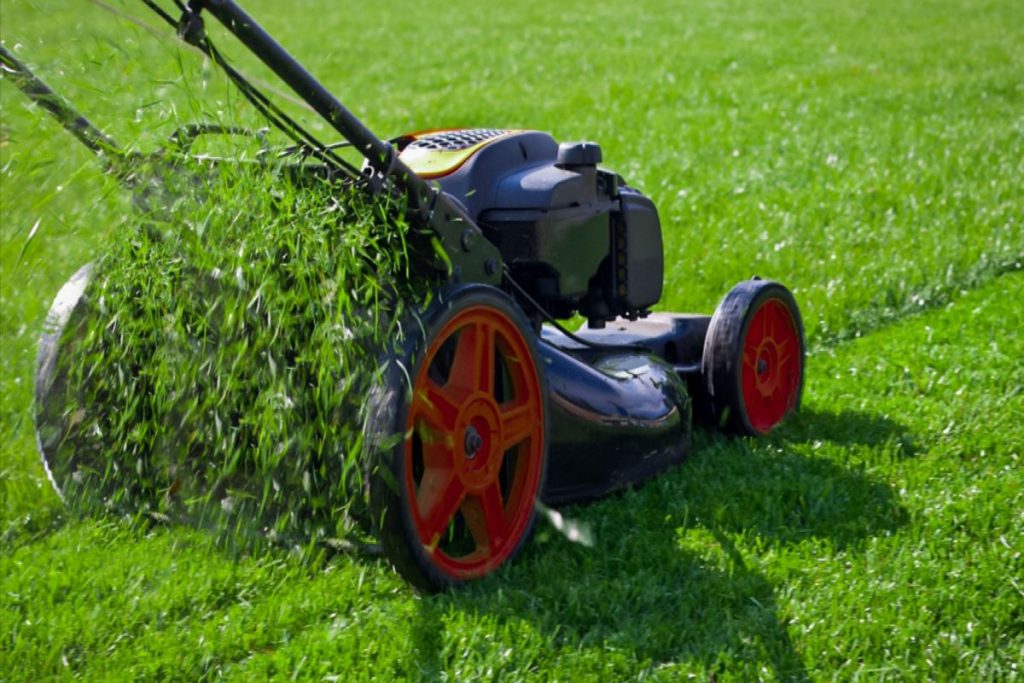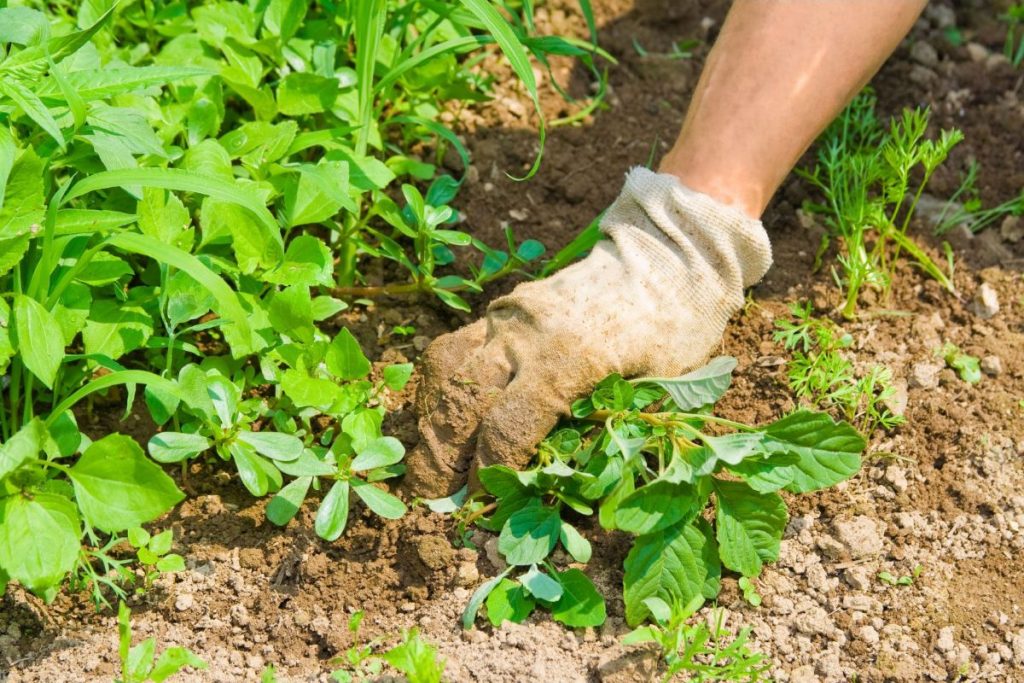Table of Contents
Lawn care is fundamental to good gardening. New lawns, in particular, require daily care and watering to become established, but once a lawn is stable it should be maintained using a range of different techniques. Here are some of the most important lawn care tips.
Regular Cutting
Mowing the lawn should be a weekly activity, and most garden experts would recommend not cutting too closely, as it damages the shoots. It also allows light to filter down to the soil, encouraging weeds. The ideal height is around 4cm from the ground, and perhaps as short as 3cm in the summer. Ensure that your mower cuts consistently and accurately to the required height.
Apply Lawn Food
Some encouragement may be needed during spring to provide nutrition for a greener lawn. The best preparations contain a weed control agent and moss killer and usually take around five minutes to apply from a tank sprayer. For an organic alternative, you can sprinkle a handful of phosphate-rich bone meal over each square yard of your lawn during autumn.
Reapply Weed Control
Summer heat can rob a lawn of moisture, and encourage unwelcome guests such as dandelions and daisies, which may be attractive and seasonal, but deny moisture and nutrients to the grass. Weed control needs to be reapplied before watering, to encourage healthy grass, which will in turn force out remaining weeds.
Trim the Edges
Your lawn will creep over the borders and begin to crowd your flowering plants, so use a set of shears to keep this in check and cut any stubborn clumps back to the border. Long-handled tools place less strain on the back. A half-moon edging iron will keep the line straight.
Water at the right time of day
This can depend on the season and the available resources. Early morning watering with garden hoses can prove helpful, as water will have a chance to sink in before the hottest hours of the day. Watering in the evening may encourage water to linger, and puddles can effectively drown roots. Make sure that a morning watering session allows at least an inch of water to penetrate.
Inspect the Color
If the grass is growing through with a green tinge, it may not be getting th water it needs. Check the dampness of the soil with a spike. It should remain moist down to six inches. The lawn will begin to grow more sparsely in preparation for the winter and may require some encouragement to keep it healthy.
Scarify your Lawn
This is the act of removing the dead cuttings from the grass, as they will block light and water from the roots of the fresh shoots. Comb the old thatch out using a scarifier or lawn rake, ideally twice a year.
Aerate your Lawn
Make a regular pattern of holes with a fork, or use a spiking machine to reduce bending and fatigue while aerating larger lawns. Compaction of the soil will result in loss of air spaces under the surface, and grass will weaken through insufficient oxygen supply. Introduce air into the soil regularly to help the grass prosper, even in dry spells.
Minimize Traffic
Limit access for pets and children to minimize damage and allow new grass shoots to flourish without the additional friction of feet and wheels. This is especially important for new patches of lawn.
Invest in a Good Hose
Regardless of water availability, the hose needs to reach into the furthest reaches of the garden and distribute water evenly across the whole surface. The hose should be wound into a reel or carrier to minimize tangles.
Lawn Care Tips For Beginners
Mowing
Frequency: Regular mowing is essential. During the growing season (spring and summer), aim to mow once a week or as needed.
Height: Set your mower to the appropriate height for your grass type. Generally, it’s best to keep grass between 2.5 to 4 inches in height, depending on the species.
Watering
Deep and Infrequent: Water deeply but infrequently. Aim for about 1 to 1.5 inches of water per week, either through rainfall or irrigation.
Morning Watering: Water in the early morning to reduce evaporation and the risk of diseases.
Fertilizing
Timing: Fertilize in the spring and fall, which are the primary growing seasons for most grasses.
Choose the Right Fertilizer: Use a balanced, slow-release fertilizer with the appropriate N-P-K (nitrogen, phosphorus, potassium) ratio for your grass type. Soil testing can help determine your lawn’s specific needs.
Weeding
Regular Inspections: Check your lawn for weeds regularly and remove them as soon as you spot them.
Pre-emergent Herbicides: Apply pre-emergent herbicides in the spring to prevent weed seeds from germinating.
Aeration
Core Aeration: Aerating your lawn in the fall or spring helps improve air and water penetration to the roots.
Reduce Soil Compaction: Aeration also reduces soil compaction, which can inhibit root growth.
Dethatching
Thatch Removal: If you notice a thick layer of thatch (dead grass and debris) on your lawn’s surface, consider dethatching in the fall or spring to promote healthy grass growth.
Seeding and Overseeding
Bare Spots: Fill in bare spots by seeding with grass appropriate for your region.
Overseeding: In the fall, overseed your entire lawn to encourage a thicker, healthier turf.
Lawn Equipment Maintenance
Regular Maintenance: Keep your lawnmower and other equipment well-maintained, including sharpening mower blades and cleaning after use.
Pest and Disease Control
Identify Problems: Learn to identify common lawn pests and diseases. Address issues promptly with appropriate treatments or consult a professional if needed.
Mulching
Leave Grass Clippings: Allow grass clippings to remain on the lawn after mowing. They break down and provide natural nutrients.
Sunlight and Shade
Choose the Right Grass: Different grass species have varying sunlight requirements. Select a grass type that suits your lawn’s sun exposure.
Patience: Remember that it may take some time to achieve the desired results. Be patient and consistent with your lawn care efforts.
Environmental Considerations
Avoid Overuse of Chemicals: Be mindful of the environment and avoid overusing pesticides and fertilizers. Follow product instructions carefully.
Local Expertise: Consider seeking advice from local lawn care experts or agricultural extension services, as they can provide region-specific guidance.
Remember that lawn care is an ongoing process, and the specific needs of your lawn may vary based on factors like climate, soil type, and grass species. Regular maintenance and attention to your lawn’s unique characteristics will help you achieve a healthy, lush, and vibrant lawn over time.
Lawn Care Guide Infographic









